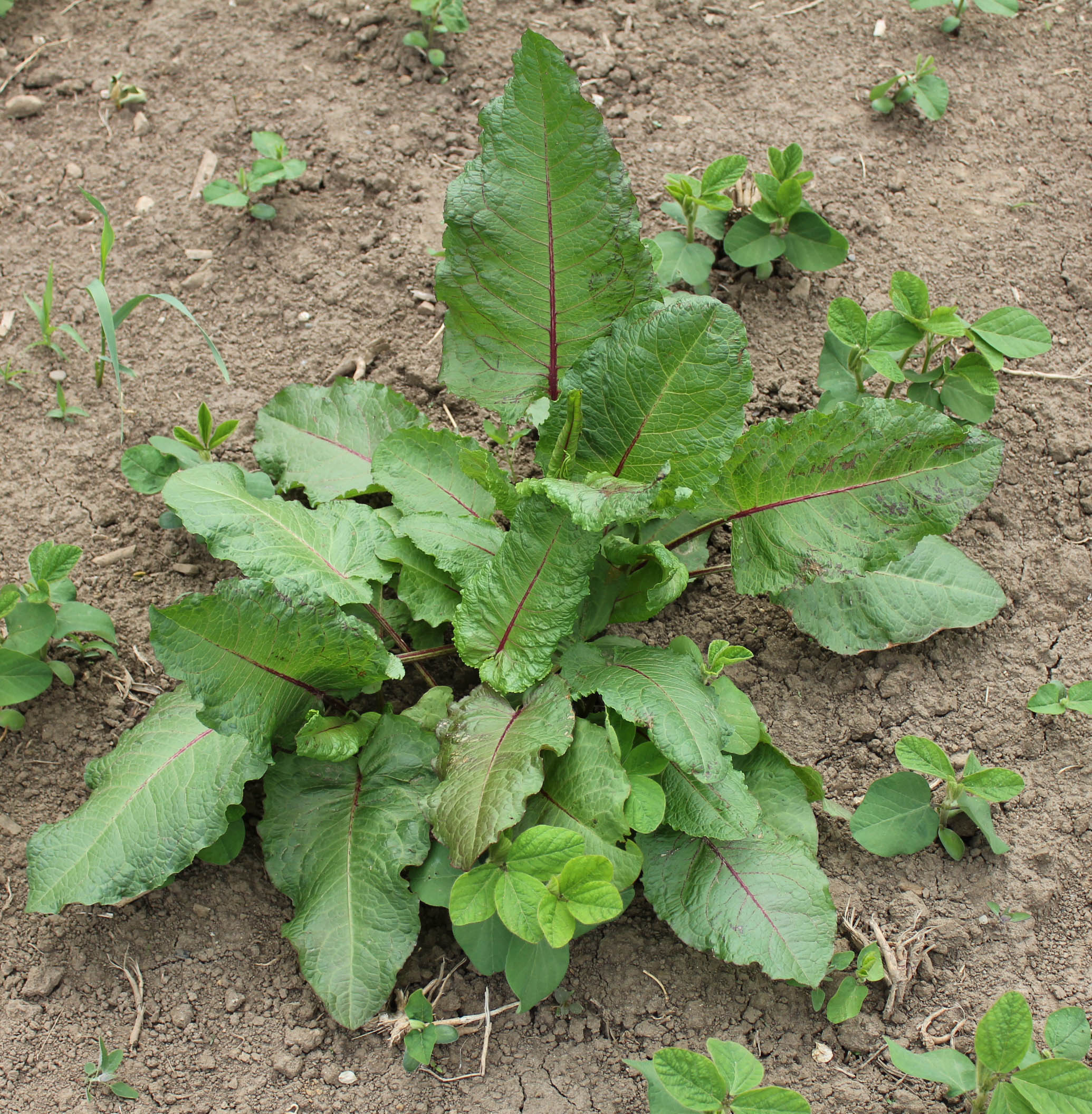Docks
- Smartweed (Polygonaceae family):
- Curled dock: Rumex crispus L. and Broad-leaved dock: Rumex obtusifolius L.
- EPPO code:
- RUMCR, RUMOB
- Other names:
- Curly dock, blunt-leaved dock
Species information
- Lifecycle:
- Perennial.
- Propagation:
- Reproduces by seed.
- Emergence:
- Docks germinate mainly in early spring and autumn with a higher percentage of seed germinating when on the soil’s surface rather than when buried (Pye and Andersson, 2009).
- Habitat:
- Docks can be found throughout Ontario. They are most often found in moist waste places, along fencerows and roadsides, and in pastures. They are occasionally found in cultivated fields.
- Competitiveness:
- No data exists on the competitiveness of docks.
Identification clues
Seedling
- Cotyledon leaves:
- Elongated.
- Leaves (curled dock):
- The leaves of curled dock are long (10–30 cm) and narrow with very wavy margins. They are green with reddish purple blotches.
- Leaves (broad-leaved dock):
- Broad-leaved dock leaves are much wider than those of curled dock; the base is heart-shaped. They have wavy margins and the surface is green with reddish-purple blotches.
Mature plant
- Stems:
- Both species have a membranous sheath, called an ocrea, which wraps around where the leaf stem attaches to the main stem. Leaves are alternate.
- Flowers:
- Both species have small, green flowers clustered in whorls around the branches of the main inflorescence.
- Fruit:
- Docks produce brown fruit with three wing-like papery sections that contain one prominent, egg-shaped seed. Broad-leaved dock fruit differs in that the wing-like papery sections have irregularly toothed margins whereas curled dock has entire margins.
- Roots:
- Strong and deeply penetrating taproot.





Updated: January 13, 2023
Published: January 13, 2023